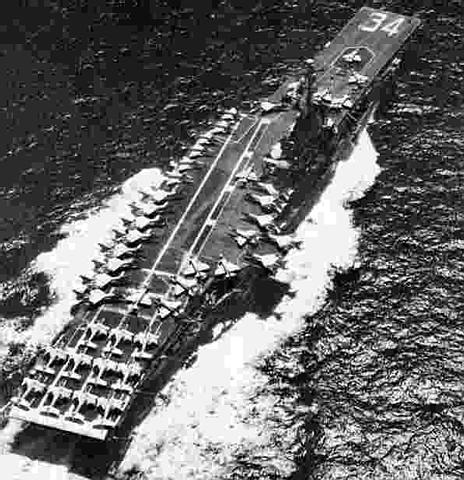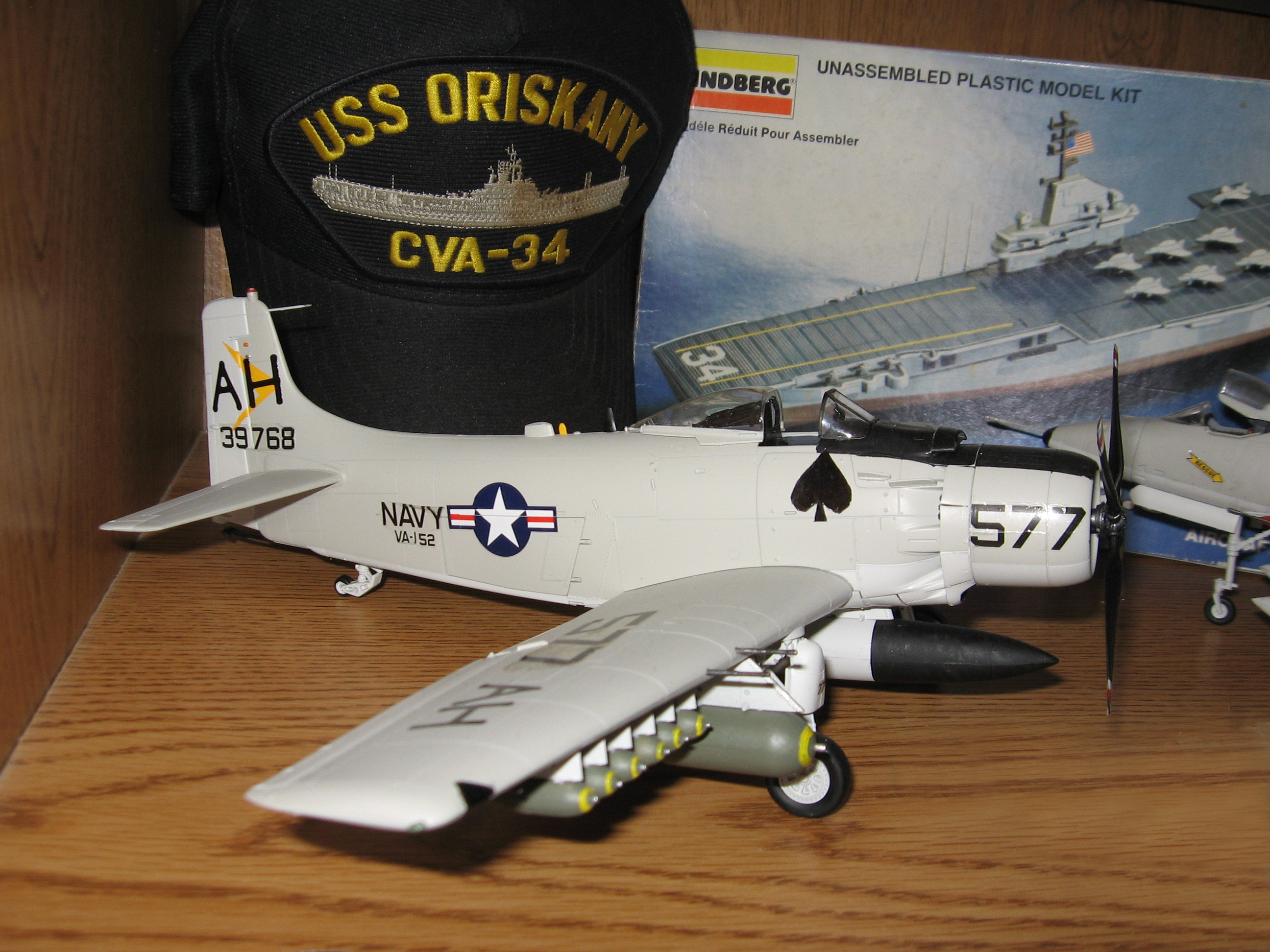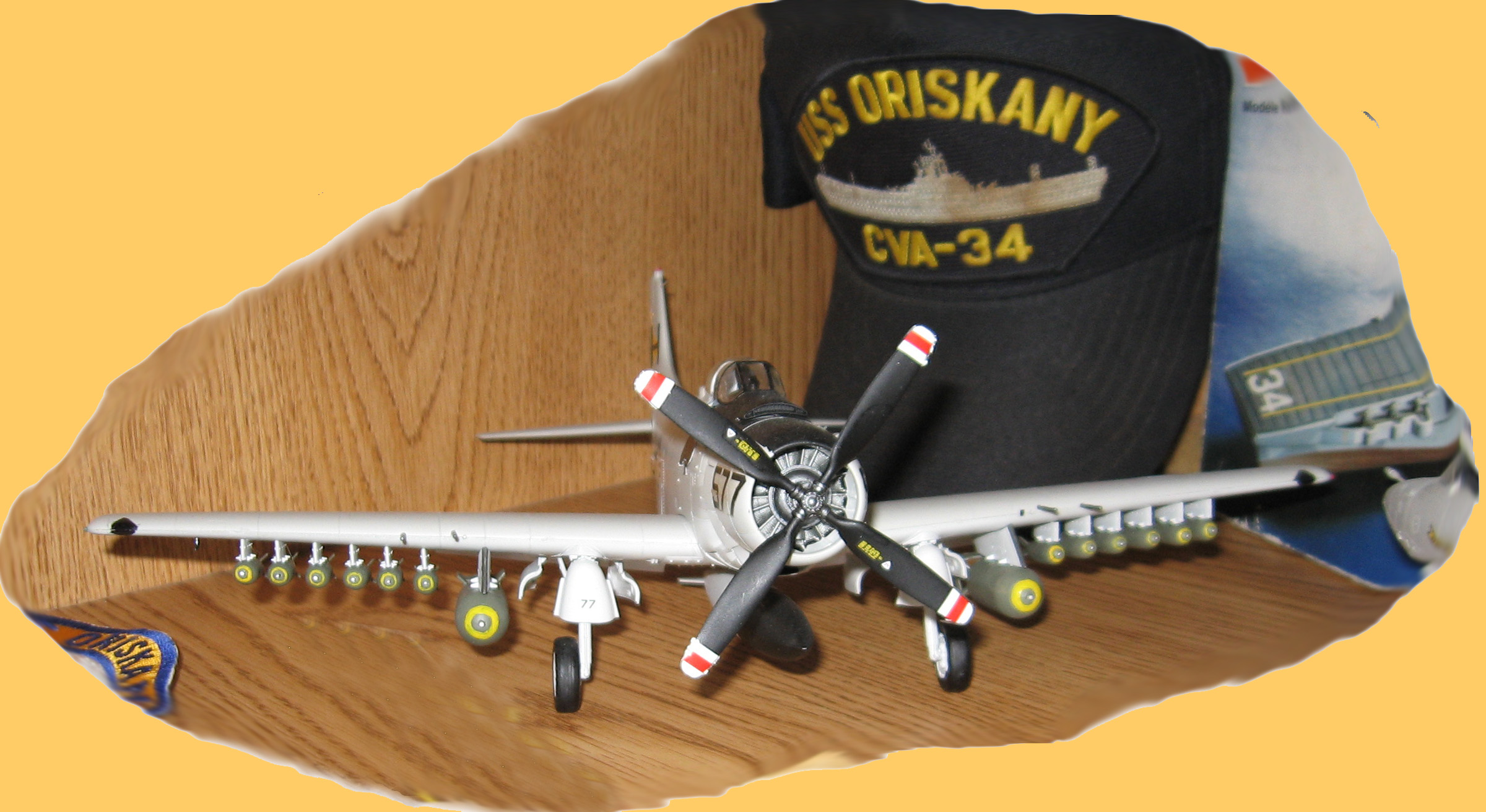|


USS Oriskany 1966 Westpac Log
USS Oriskany CVA-34
departed San Diego, California, May 26, 1966, in route for Pearl Harbor. In
Hawaii, the Mighty "O" underwent her operational readiness Inspection
to determine her readiness for overseas deployment. Steaming from Pearl Harbor
on June 6, Oriskany proceeded to the U.S. Naval Air Station, Yokosuka, Japan,
for a brief visit.
Arriving
in Yokosuka on
June 14, she remained in this Japanese port until June 21, 1966, once again
observing the Ship’s tradition of hosting children from the Oriskany Home, an
orphanage under the care of Catholic Salesian nuns in Kusanagi, Japan. Oriskany
men donated the funds with which the home was built in 1952 and still continued
their support.
Leaving
Japan, the ship
steamed southward to the fleet support base at Subic Bay, Philippine Islands
where two days were spent before Oriskany joined other Seventh Fleet units
making up Task Force 77, in the South China Sea.
Oriskany’s
first
operational period was spent on "Dixie Station" from June 30 to July
7, then moving up to "Yankee Station", from July 8 through July 28.
This
first sea period
proved indicative of the vigorous pace Oriskany would maintain throughout her
deployment, with air operations beginning before dawn and continuing far into
the night.
On
July 13 and 14,
Oriskany was honored by a visit on board by the Secretary of the Navy, the
Honorable Paul H. Nitze. On July 16 and 17, Vice Chief of Naval Operations,
Admiral Horatio M. Rivero, paid Oriskany a visit.
After
34 days at sea,
Subic Bay was a welcomed site, for a little rest and recreation, but arriving
on July 30, Oriskany departed again on August 4 and was back on Yankee Station,
in the Gulf of Tonkin on August 7.
Under
the adverse
conditions of extreme tropical heat, shortages of fresh water and other comfort
commodities, Oriskany accomplished her assigned tasks without missing a single
day’s combat mission. Work days of 15 hours or more were normal routine, seven
full days a week.
The
famed radio and
television personality, Author Godfrey was a guest on board Oriskany, August 11
to the 14, during which visit he inaugurated the ship’s new closed circuit
television station, KRIS-TV.
Not
content with flying
ordnance off the ship at record rate, Oriskany men set a new underway ordnance
replenishment record with the ammunition ship, USS Mt. Katmai AE-16 at the
unbelievable rate of 437.5 tons per hour. Underway replenishment is the tricky
operation of receiving ordnance, food, fuel and other supplies from support
ships, while underway at sea.
From
the 9th until the
14th of September, after 30 days "on the line", Oriskany was back in
Subic Bay once again for another brief respite. Departing Subic, September 15,
on her way to Hong Kong, Oriskany participated in "Operation
Crossdecks" with HMS Victorious, in which planes from Oriskany flew over
and landed on board Victorious, with her planes flying to the Oriskany.
Oriskany
performed a
daring rescue operation, via her helicopters, on September 16, when she moved
the 44-man crew of the SS August Moon, a merchant ship of British registry,
aground on Pratas Reef, 175 miles southeast of Hong Kong. A near tragedy
resulted, when one of Oriskany’s helicopters was engulfed by a gigantic wave
and crashed into the water, but all three crewmembers were picked up by other
helos and returned to safety.
Oriskany
put into the
port of Hong Kong, on September 17, spending from the 17th until the 22nd in
this exotic British Crown Colony.
On
September 24, the
Mighty "O" was back again on Yankee Station, carrying out her tight
and exhausting operational schedule.
Oriskany
set two
records, on October 1st, with the 116,000th fixed wing landing on board and her
6,000th helicopter landing. Sunday, October 9, saw Richard M. Bellinger,
Commanding Officer of Fighter Squadron 162 "Hunters" , "Day of
Retribution" downing of a North Vietnamese Mig 21, evening the score,
after having been shot down by a Mig three months before.
Oriskany
was honored by
the visit of Secretary of Defense, Robert S. McNamara, Assistant Secretary of
Defense for Public Affairs, Author Sylvester, Chairman of the Joint Chiefs of
Staff General Earle G Wheeler, Commander in Chief Pacific Adm U.S.G Sharp, and
other high ranking military leaders, on October 12th and 13th. During his visit
on Board, Mr. McNamara presented CDR Bellinger with Silver Star medal for his
Mig kill.
Movie
and television
personality John Gavin paid a visit to Oriskany, on October 21 and was
interviewed over the ship’s television station, KRIS-TV during his tour of the
carrier.
On
the morning of
October 26, Oriskany’s combat operations in the Gulf of Tonkin came to a sudden
and tragic termination when her morning launch was halted by the disastrous
fire which erupted on board this proud combat veteran. Erupting in the vicinity
of the starboard aircraft flare locker, in hangar bay one, the fire spread
rapidly forward, extending over five decks, trapping many officers in their
staterooms. Before the fire was brought under control, some three hours later,
44 shipmates, 36 officers and 8 enlisted men, had lost their lives. Many of
this number were veteran combat pilots, who hundreds of times had survived the
flak and missiles over North Vietnam.
Click here to go to Gene Lewis' Oriskiny web site where you can view the original Life magazine story on the fire aboard the
Oriskany in October 1966 as well as a lot of other memorabilia relative to the ship. It's an outstanding web site.
Click here to go to the account of the fire in the Bureau of Naval Personnel magazine All Hands.
Click here to read an account of the fire in Time Magazine.
Click here to read the Life Magazine story of the fire on Archives.com
 |
 |
|
"My Memories of that Day"
"We had just gone to flight quarters on the morning of October 26, 1966. It was a beautiful sunny day and the ship had turned
into the wind to begin the morning launch of aircraft. We had already launched one or two A4 aircraft before the fire broke
out. We were also running side by side with an ammunition ship, I think it was the USS Katmire. Not sure on the name. We were
taking on ammunition, side winders, gravity bombs and flares. The hanger deck was lined with gravity bombs that had been high-lined
over from the other ship.
I remember the first sign of fire, to the busy flight deck was the smoke bellowing up from the starboard side, just forward
of the island. The fire alarm was called over the ships communication system. The ammunition ship did an emergency break away.
At the time the ship was still running into the wind and the smoke had engulfed the flight deck. It was almost impossible
for a time to even see any distance or breathe, because there was so much smoke.
The ship finally tuned so that the smoke was blowing away from the starboard side of the ship. For a while this really hampered
the fire fighters and rescue workers in there attempts to rescue and put out the fire. As you know from your Navy fire fighting
training, that a magnesium fire cannot be put out with water, it virtually has to be smothered.
The men who were assigned to the flight deck operations went immediately to their fire stations, manning fire hoses on the
flight deck. Pumping water over the starboard side onto the heated area. I remember donning the OBA (Oxygen breathing apparatus)
and being tied to other sailors by a lanyard and being sent into the lower deck spaces from the port catwalk to rescue sailors
that were trapped or lost in the passage ways.
The heat was intense. It felt like we had entered into a 350 degree oven. It was so hot, even after walking only 10 or 20
feet into the passage ways, you could feel the intense heat coming from the fire. There were no lights, and lot of smoke,
you could hardly see your way, only feel.
On the flight deck, at elevator number 1, forward, between the catapults, the rubber caulking around the elevator and the
pad eyes was bubbling from the intense heat below. This area was real close to the core of the fire, I would say almost right
below. Just starboard of the elevator 1 and a little aft is the location of the flare lockers. I believe there were three
flare lockers. I remember the un-identifiable, charred remains of sailors being brought up to the flight deck and being laid
out next to the island of the ship. A space just inside of the island, were the yellow and blue shirt flight deck crew used
for their coffee locker, was set up as a place for the dead to be placed into body bags.
We fought the fire for hours, we pushed A4's laden with bombs over the side from the hanger deck, elevator 2, that had been
readied for launch for that mornings flight quarters. We rolled the gravity bombs over the side that had been laid out on
the hangar deck, to get them out and away from the intense heat of the fire. A lot was going on everywhere. No time for anyone
to give commands, it was a time when every man had to think for them selves and act on whatever they could do to help save
lives and extinguish the fire.
After the fire was brought under control, the Oriskany steamed slowly back into Subic Bay, Philippines. The ship was heavily
list by taking on so much water to cool and extinguish the fire. Some were afraid that it may even sink. The thought had definitely
crossed my mind and others as well.
I hope that this will be of some use to you. As you know I can't verify any of this information, only recant my memories.
I hope that you and others will enjoy reading this. Thanks a lot for giving me the opportunity to write my memories down and
let other people know how it was from the view point of a 19 year old American sailor."
Thanks again, Larry LeFoy.
|
|
 |
 |
Having extended her own time "on the line" a number of times previously to "pinch hit" for
other carriers suffering unfortunate engineering casualties now the majestic pace setter herself was forced to withdraw, due
to her extensive fire damage.
Oriskany steamed solemnly into Subic Bay, early on the morning of October 28 with her colors at half mast, in honor of her
dead, unloaded the flag draped bodies of her departed shipmates to fly them home for burial. Upon the request of his family,
one body was retained on board for burial at sea.
After a few major repairs at Subic Bay, Oriskany departed on the morning
of November 3, for her return to the United States and a yard period to repair her fire damage and return her to her former
"combat readiness" once again.
On November 6, 125 miles east northeast of Iwo Jimo, memorial services for Oriskany’s 44 fire victims were held and
the body of LCDR Omar R. Ford, of Chula Vista, California, a native of Lincoln, Nebraska, was committed to the deep.
Oriskany was deployed just short of six months,
spending 142 days of this time at sea, steaming over 75,000 miles and dropping 6,272 tons of ordnance on communist targets
in North Vietnam.
Click here to go to the official US Navy web site for the USS Oriskany
Click here to go to a web site that gives information about the USS Oriskany, including free access to all of the Oriskany
Cruise Books.
Lou Jackson served on the USS Oriskany from 1963 to 1967 as a Yellow Shirt Fly-1, serving three tours off Vietnam.
His son, Scott Jackson furnished these pictures of an A-1 Skyraider model he put together.
|
 td> td>
|

|
|

